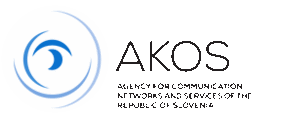Even though analog FM radio is still the prevailing radio broadcasting technology, the possibility of digital radio networks already exists. The VHF (band III, 174-230 MHz) and L bands (1452-1490 MHz) of the radio spectrum have been allocated for this purpose. The prevailing technology for digital radio networks is T-DAB, however other systems are also being examined. The possibilities and technologies for digitalizing the radio spectrum band currently used for FM radio (87.5-108 MHz) are also being examined.
The difference between Analog and Digital Transmission
The main difference between analog and digital radio program transmission is the fact that in analog transmission (FM radio) a frequency is linked to one program, while in digital transmission a multiplex (digital package of programs) is transmitted on a certain frequency. For this reason, entities related to digital networks are divided into program publishers and network operators.
There is also a difference in the way the frequencies are used. In analog networks, transmitters operate on different frequencies, while in digital networks single-frequency networks can be formed, in which all transmitters in a network can be synchronized and transmit on the same frequency. This provides a more efficient use of the radio frequency spectrum.
How to acquire frequencies?
In digital radio networks, radio program publishers do not acquire frequencies but lease space (i.e. capacity) in existing multiplexes (digital program packages). A radio program publisher must however still acquire a license for digital broadcasting through a public tender.
Interested operators can acquire frequencies for digital radio networks through public tenders. Public tenders are also open to program publishers, who, if they succeed in the tender, must provide services to other interested publishers with appropriate licenses under the same conditions.
After the switch to digital television broadcasting, the VHF band of the radio spectrum, where Slovenia has the right to a fourfold national coverage, became available, and more fold coverage (especially local and regional) is also available in the L band. All these rights are determined with geographic zones, where the state has the right to use certain internationally harmonized frequencies. Before the Agency publishes a public tender for such a network, it must internationally harmonize technical parameters for individual transmission points that will comprise the digital network. Since the switch to a digital network in neighboring countries has still not been concluded, and since other countries are also planning their own networks, the harmonization process is still underway. When these procedures are concluded, the Agency will publish a tender for digital network frequencies if there is interest.
In FM radio, the practice was that each radio program publisher expanded the network of transmitters and coverage into the desired area. In a digital radio network, such an approach is impossible, since the network is managed by an operator which joins several programs in a multiplex, and on the other hand the network’s geographic area is determined in advance and usually cannot be changed.
Currently, only RTV Slovenija has frequencies for one digital radio network (only one transmission point at Krvavec is operating). There are several reasons for the lack of interest in digital radio transmission, and one of the main reasons is the fact that there are no receivers in the market, since suitable programs are unavailable. The other reason lies in the T-DAB technology, which does provide capacity for several programs in relation to geographic areas, however when preserving the quality (lower compression rates), the capacity decreases significantly.
In addition to the older T-DAB (and the newer T-DAB+ version) technology, other technologies that could be used in the VHF band, as well as for the switch to digital transmission in the radio spectrum currently allocated for the FM radio, are also being examined in the framework of the European Conference of Postal and Telecommunications Administrations – CEPT.
 RSS
RSS Slovenian
Slovenian


 Top of the page
Top of the page
 Print
Print